
How to Use BME688: Examples, Pinouts, and Specs
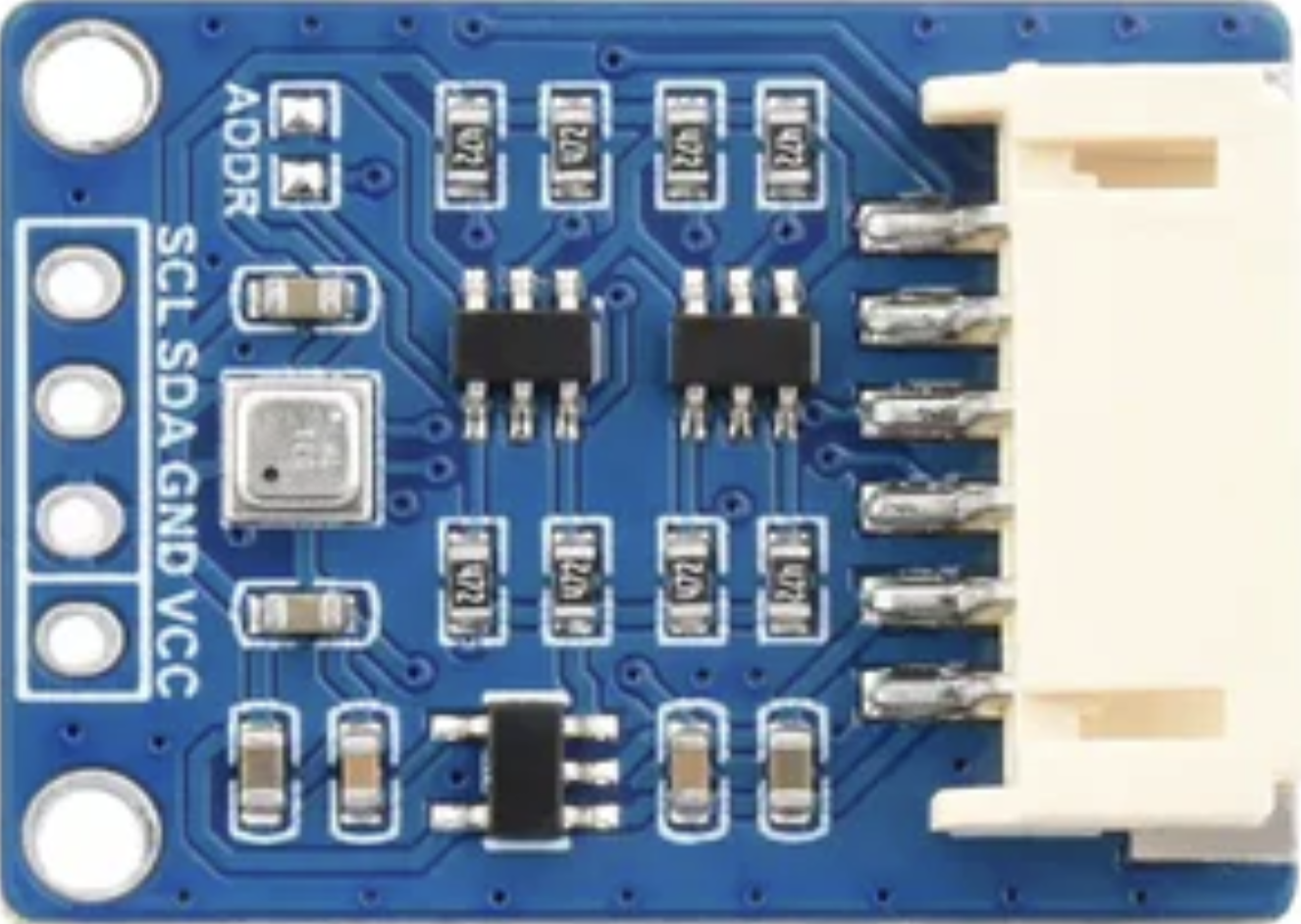
 Design with BME688 in Cirkit Designer
Design with BME688 in Cirkit DesignerIntroduction
The BME688, manufactured by Bosch (Part ID: UNO), is a versatile environmental sensor designed to measure temperature, humidity, pressure, and gas concentrations, including volatile organic compounds (VOCs). This sensor combines high accuracy and low power consumption, making it ideal for air quality monitoring, IoT applications, and smart home devices. Its compact design and advanced features allow it to provide reliable data in a wide range of environmental conditions.
Explore Projects Built with BME688
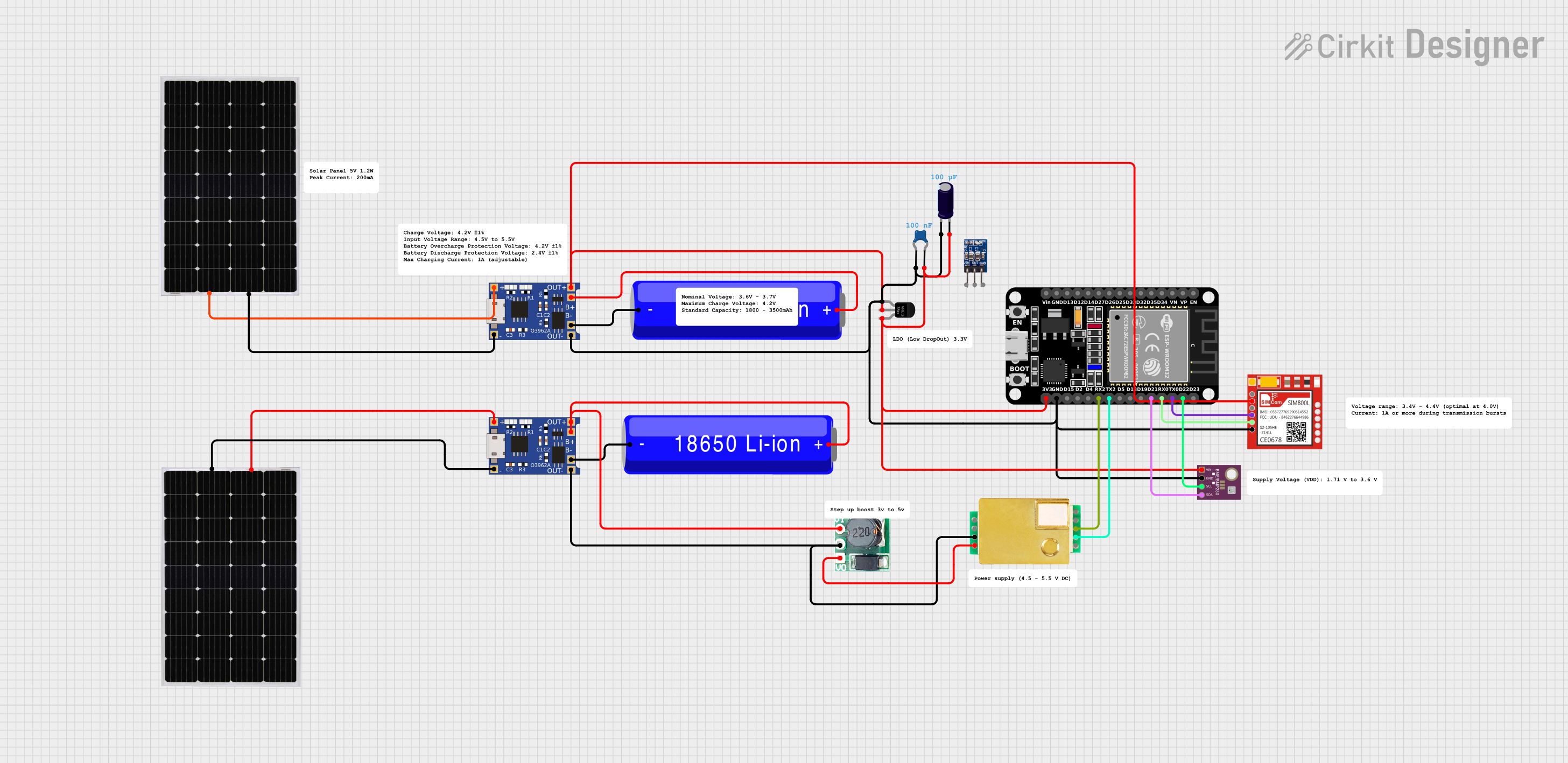
 Open Project in Cirkit Designer
Open Project in Cirkit Designer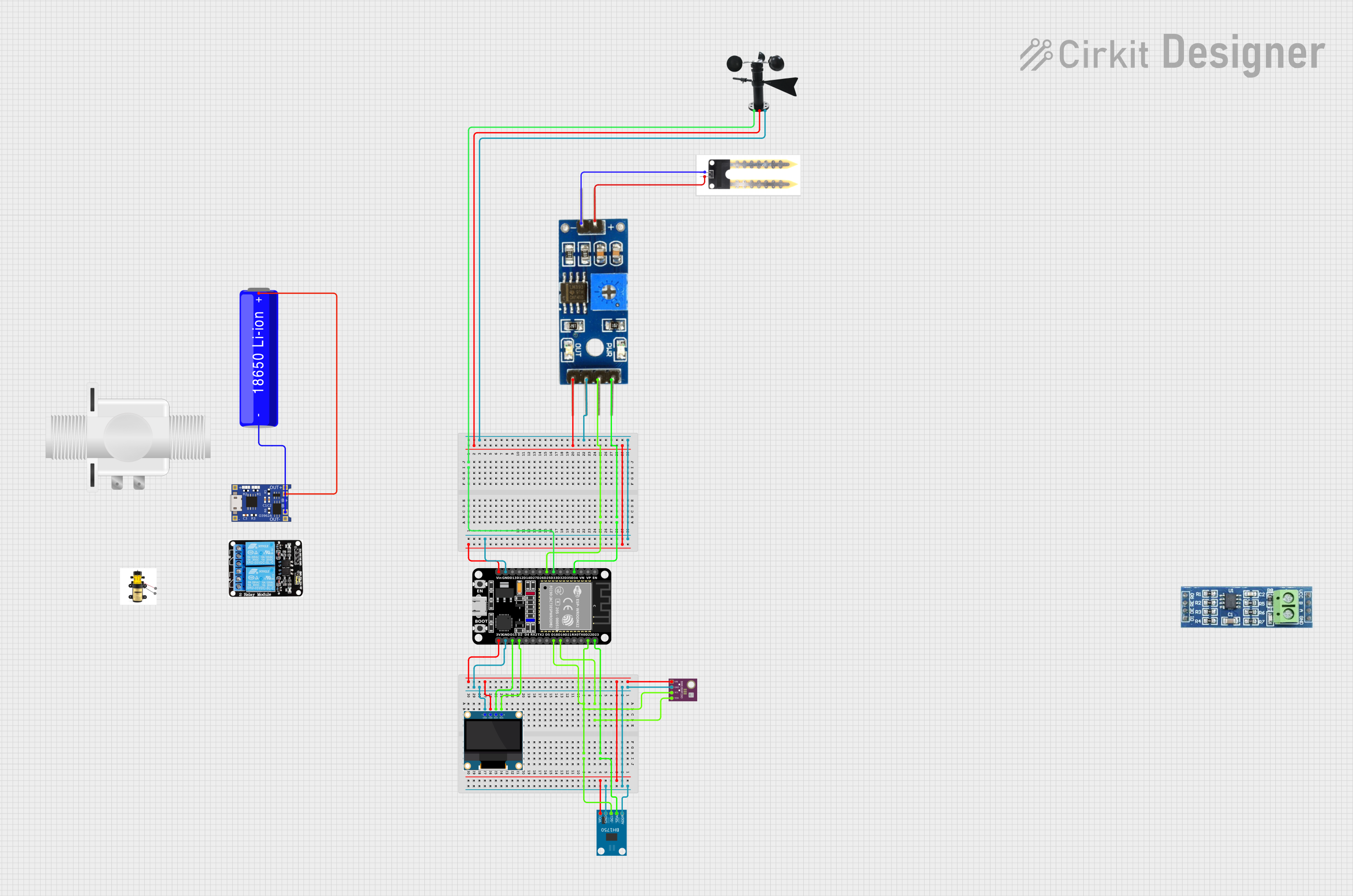
 Open Project in Cirkit Designer
Open Project in Cirkit Designer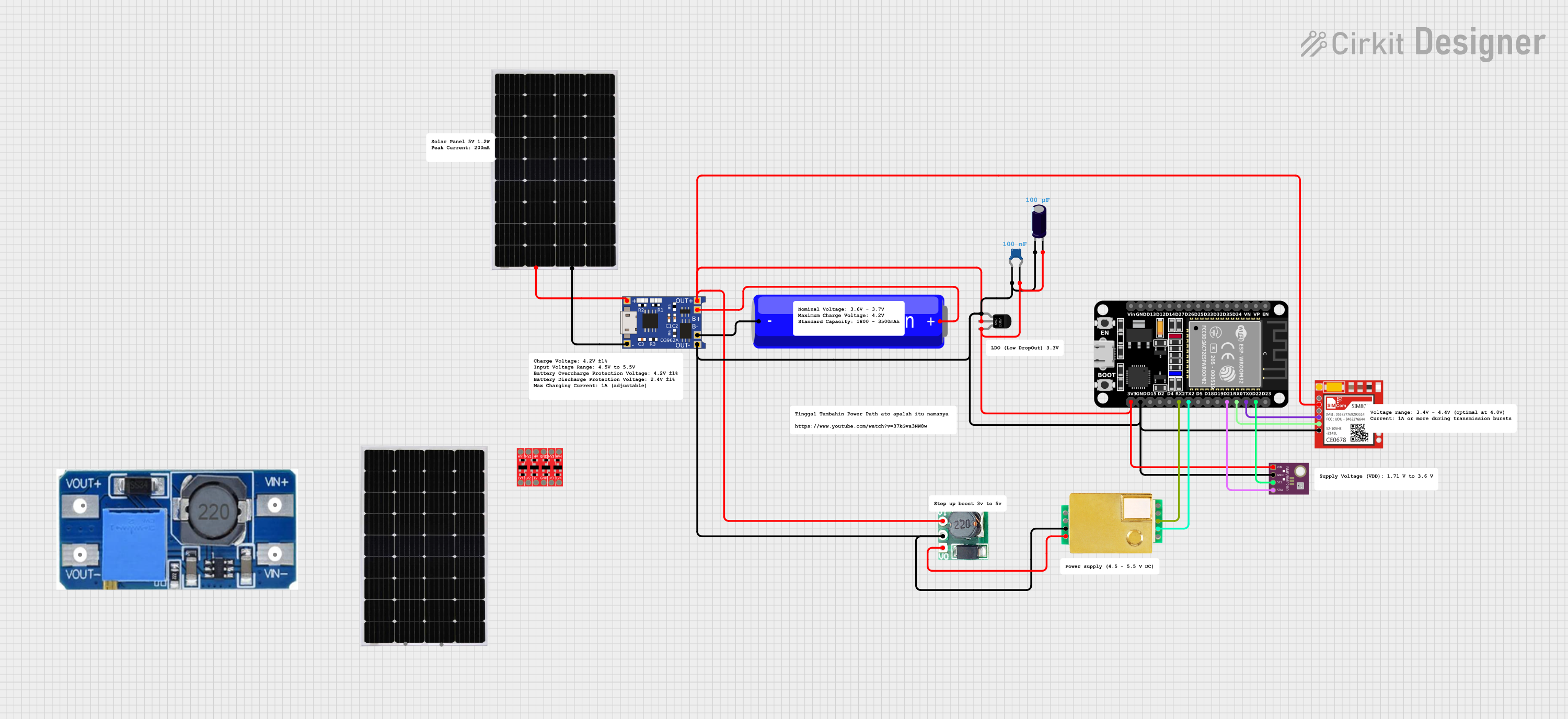
 Open Project in Cirkit Designer
Open Project in Cirkit Designer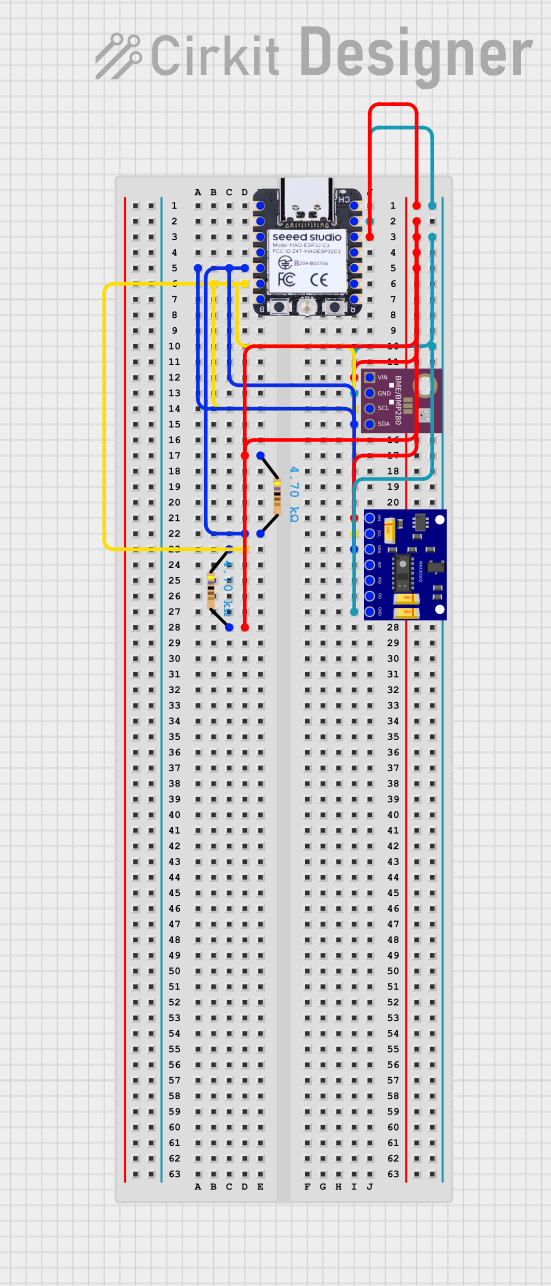
 Open Project in Cirkit Designer
Open Project in Cirkit DesignerExplore Projects Built with BME688

 Open Project in Cirkit Designer
Open Project in Cirkit Designer
 Open Project in Cirkit Designer
Open Project in Cirkit Designer
 Open Project in Cirkit Designer
Open Project in Cirkit Designer
 Open Project in Cirkit Designer
Open Project in Cirkit DesignerCommon Applications
- Indoor air quality monitoring
- Weather stations
- IoT-enabled environmental sensing
- HVAC systems
- Smart home automation
- Wearable devices for environmental tracking
Technical Specifications
The BME688 is a highly integrated sensor with the following key specifications:
| Parameter | Value |
|---|---|
| Supply Voltage | 1.71V to 3.6V |
| Operating Current | 2.1 µA (sleep mode), 3.7 mA (typical during gas measurement) |
| Temperature Range | -40°C to +85°C |
| Humidity Range | 0% to 100% relative humidity (non-condensing) |
| Pressure Range | 300 hPa to 1100 hPa |
| Gas Measurement | Detects VOCs and other gases (e.g., CO2 equivalents) |
| Interface | I2C and SPI |
| Dimensions | 3.0 mm x 3.0 mm x 0.93 mm |
Pin Configuration and Descriptions
The BME688 has an 8-pin LGA package. The pin configuration is as follows:
| Pin Number | Pin Name | Description |
|---|---|---|
| 1 | VDD | Power supply voltage (1.71V to 3.6V) |
| 2 | GND | Ground connection |
| 3 | SCL/SPICLK | I2C clock line / SPI clock |
| 4 | SDA/SDI | I2C data line / SPI data input |
| 5 | CSB | Chip select for SPI (active low) |
| 6 | SDO | SPI data output |
| 7 | VDDIO | I/O voltage supply (1.2V to 3.6V) |
| 8 | NC | Not connected (leave floating or connect to GND for stability) |
Usage Instructions
How to Use the BME688 in a Circuit
- Power Supply: Connect the VDD pin to a stable power source (1.71V to 3.6V) and the GND pin to ground. Ensure the VDDIO pin is connected to the appropriate I/O voltage level.
- Communication Interface: Choose between I2C or SPI communication:
- For I2C, connect the SCL and SDA pins to the corresponding I2C lines on your microcontroller.
- For SPI, connect the SPICLK, SDI, SDO, and CSB pins to the respective SPI lines.
- Pull-Up Resistors: If using I2C, add pull-up resistors (typically 4.7 kΩ) to the SCL and SDA lines.
- Gas Sensor Warm-Up: Allow the sensor to warm up for a few minutes after powering on to stabilize gas measurements.
- Software Configuration: Use the Bosch BME688 library or write custom code to initialize the sensor and read data.
Important Considerations
- Placement: Avoid placing the sensor near heat sources or in direct sunlight, as this may affect temperature and humidity readings.
- Calibration: For gas measurements, the sensor may require calibration in the target environment for optimal accuracy.
- Power Management: Use sleep mode to reduce power consumption when the sensor is not actively measuring.
Example Code for Arduino UNO
Below is an example of how to interface the BME688 with an Arduino UNO using I2C:
#include <Wire.h>
#include <Adafruit_Sensor.h>
#include <Adafruit_BME680.h>
// Create an instance of the BME680 sensor
Adafruit_BME680 bme;
// Define I2C address (default is 0x76, alternate is 0x77)
#define BME680_I2C_ADDR 0x76
void setup() {
Serial.begin(9600);
while (!Serial); // Wait for serial monitor to open
// Initialize the BME680 sensor
if (!bme.begin(BME680_I2C_ADDR)) {
Serial.println("Could not find a valid BME680 sensor, check wiring!");
while (1);
}
// Configure sensor settings
bme.setTemperatureOversampling(BME680_OS_8X);
bme.setHumidityOversampling(BME680_OS_2X);
bme.setPressureOversampling(BME680_OS_4X);
bme.setIIRFilterSize(BME680_FILTER_SIZE_3);
bme.setGasHeater(320, 150); // 320°C for 150 ms
}
void loop() {
// Perform a measurement
if (!bme.performReading()) {
Serial.println("Failed to perform reading!");
return;
}
// Print sensor data
Serial.print("Temperature = ");
Serial.print(bme.temperature);
Serial.println(" °C");
Serial.print("Humidity = ");
Serial.print(bme.humidity);
Serial.println(" %");
Serial.print("Pressure = ");
Serial.print(bme.pressure / 100.0);
Serial.println(" hPa");
Serial.print("Gas = ");
Serial.print(bme.gas_resistance / 1000.0);
Serial.println(" kOhms");
delay(2000); // Wait 2 seconds before the next reading
}
Troubleshooting and FAQs
Common Issues
Sensor Not Detected:
- Ensure the I2C or SPI connections are correct.
- Verify the I2C address (default is 0x76; alternate is 0x77).
- Check for loose or faulty wiring.
Inaccurate Readings:
- Ensure the sensor is not exposed to extreme conditions (e.g., condensation).
- Allow sufficient warm-up time for gas measurements.
- Perform calibration if necessary.
High Power Consumption:
- Use sleep mode when the sensor is idle.
- Optimize the measurement frequency to reduce active time.
Tips for Troubleshooting
- Use a multimeter to verify power supply voltage and continuity of connections.
- Test the sensor with a known working library (e.g., Adafruit BME680 library) to rule out software issues.
- If using SPI, ensure the CSB pin is correctly configured and not floating.
By following this documentation, users can effectively integrate the BME688 sensor into their projects and achieve accurate environmental measurements.